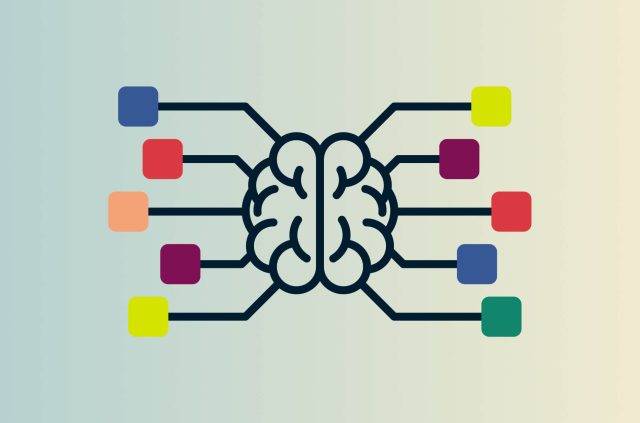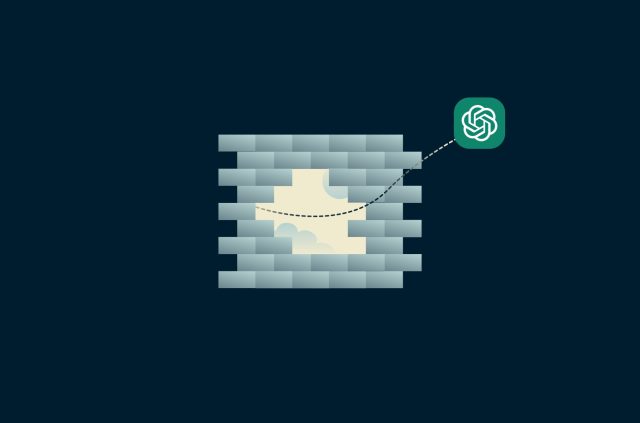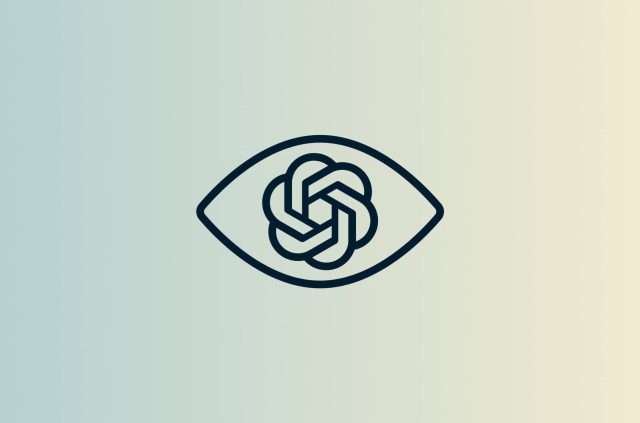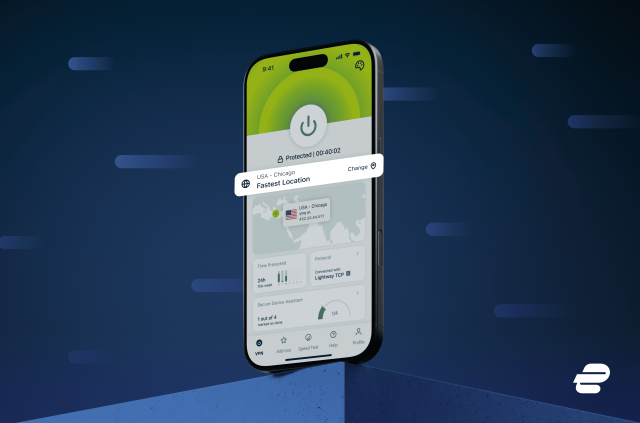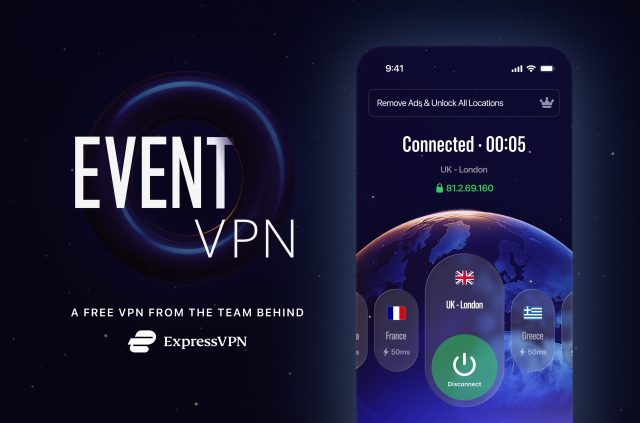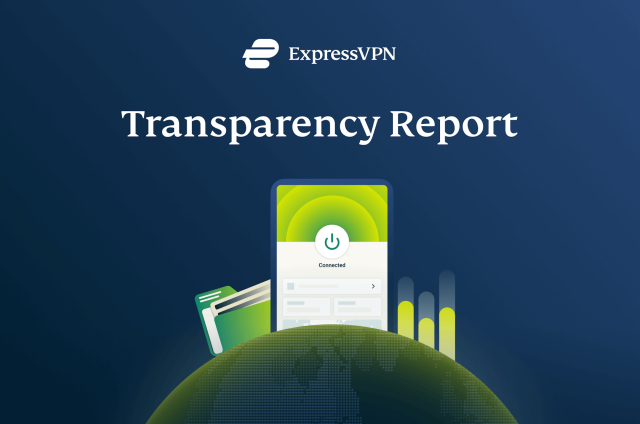ChatGPT vs. Google Bard: Which AI chatbot is better?

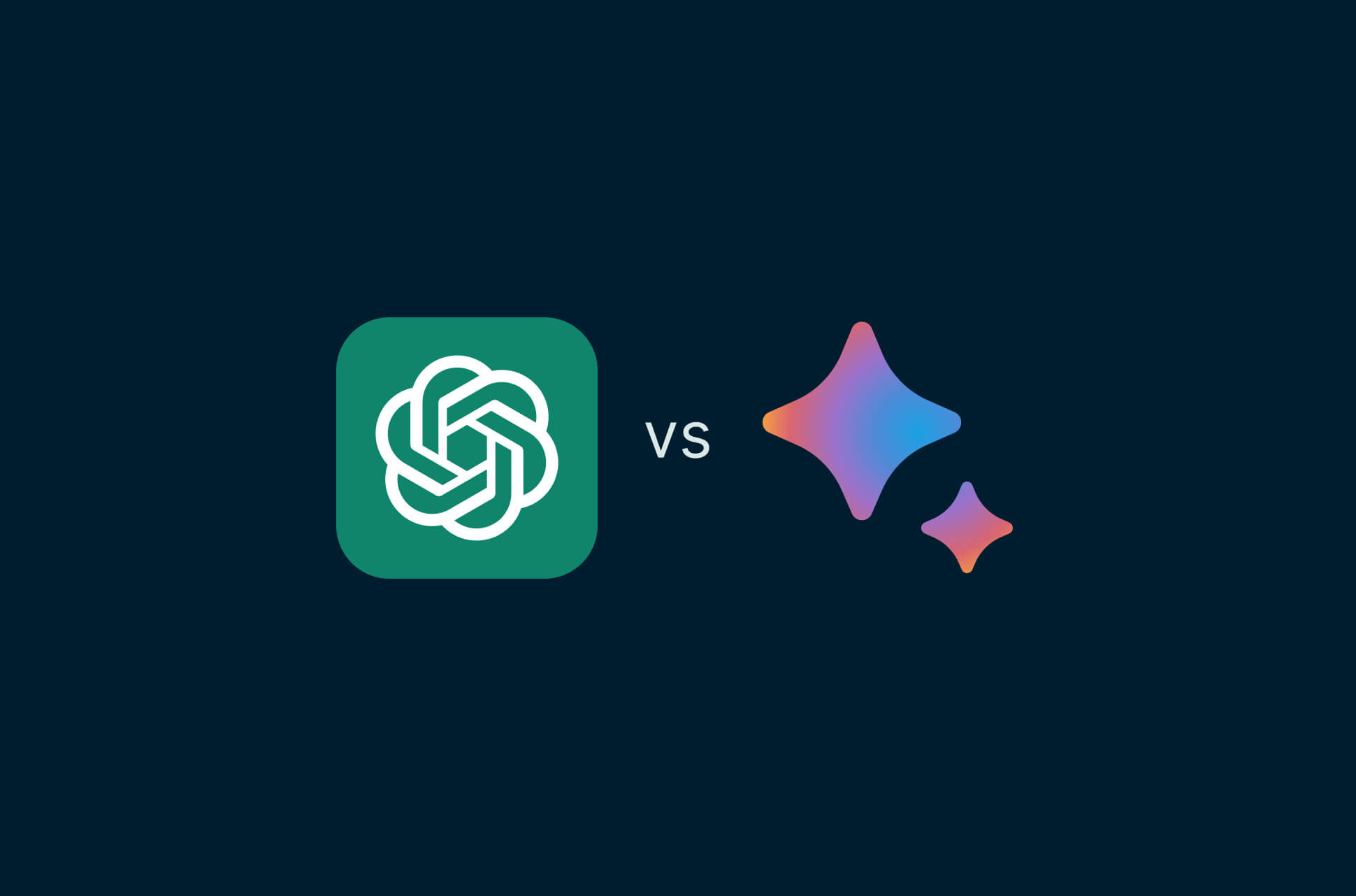
In the wake of ChatGPT’s release in November 2022, it was only a matter of time before other tech giants followed suit with their own AI chatbot offerings. In March 2023, Google unveiled its formidable contender, Bard AI, as a direct response to OpenAI's game-changing creation.
As a long-standing player in the AI arena, Google’s foray into the chatbot landscape with Bard was an interesting development that set the stage for a competition against OpenAI’s ChatGPT.
So how do the two compare when it comes to accuracy and reliability? And is one really better than the other when it comes to serving users’ basic AI chatbot needs? Let’s find out.
ChatGPT vs. Google Bard: A quick comparison
| ChatGPT | Bard AI | |
| Released | November 2022 | March 2023 |
| Developer | OpenAI | |
| Sources of data | Common Crawl, Wikipedia, books, news articles, and scientific journals. ChatGPT Plus can search the web using Bing search. | Trained on the LaMDA language model, which includes Wikipedia, web documents, tutorials, dialog from public forums, and C4-based data. |
| Training dataset date | Until September 2021 | Real-time |
| Language model | GPT-3.5/GPT-4 (ChatGPT Plus) | Pathways Language Model 2 (PaLM 2) |
| Price | Free (ChatGPT Plus costs 20 USD per month) | Free |
| Sign in | Email and telephone number required | Gmail account required |
| Languages | More than 50, including English, Spanish, French, German, Japanese, and Arabic. | Three: English, Japanese, and Korean |
| Platforms | Web, iOS, Android | Web, iOS, Android, Chrome extension |
| Plug-ins | Yes (ChatGPT Plus) | No |
| Accessibility | Available in 163 countries | Available in 180 countries |
| Strengths | Creative text generation | Natural language understanding and factual accuracy |
ChatGPT vs. Google Bard: What’s the difference?
In a nutshell, both ChatGPT and Bard are AI-powered chatbots that utilize natural language processing to generate human-like responses. However, their differences lie in the data sources and models they’re trained on.
Bard, powered by Google's PaLM 2, can provide real-time responses based on current events pulled from Google Search, making it a valuable research tool. On the other hand, ChatGPT, using GPT-3.5 or GPT-4 for paid subscribers, is generally used for generating ideas and content. While GPT-4 does pull information from the search engine Bing, ChatGPT tends to function more as a text generator or writing tool as it’s been known to spew out more factual inaccuracies than Bard.
As a result, many argue that Bard excels at answering specific questions, while ChatGPT is geared towards productivity. Both chatbots offer fast responses and are user-friendly, with Bard requiring a Google account and ChatGPT accessible with any email address and telephone number from specific countries.
Jump to…
User interface
Language model
Data sources
Personality
Features
Data accuracy
Use cases
Privacy
Safety
Availability
Verdict
ChatGPT vs. Google Bard: User interface
ChatGPT and Bard’s interfaces are pretty similar at first glance when you log in:

The real differences come when you prompt the chatbot AIs:

| User interface | ChatGPT | Bard |
| Complexity | ChatGPT has a more straightforward interface than Bard. It has a single text box where you can type your question or request, and a button that you can click to generate a response. | Bard’s interface is more complex and detailed than ChatGPT. It has a text box where you can type your question or request, as well as a number of other features. |
| Edit questions | Once you’ve prompted ChatGPT, you can’t edit your question. If you want to clarify, you need to create a new chat or prompt. | You can edit your questions once you’ve submitted them to Bard. |
| Multiple responses | ChatGPT generates one response per prompt. If you want clarity, you need to ask it another question or click ‘Regenerate response’. | Bard often generates multiple responses to each question, which gives users more options to choose from in the form of three different drafts. |
| View and check sources | ChatGPT doesn’t provide any information about the sources that it used to generate its responses. It does have a disclaimer at the bottom of its text bar, stating it may produce inaccurate information about people, places, or facts. | Bard doesn’t cite sources along with its answers unless it offers long-form content, however, it allows users to Google what it writes to fact-check it. However, Bard also has a disclaimer at the bottom of its text box that states it may display inaccurate or offensive information. |
| Sidebar options | ChatGPT’s sidebar options allow you to start a new chat, delete old chats, and view chat history. If you want to read ChatGPT’s FAQ or get assistance, you need to click on your email as these are hidden from view. | Bard’s sidebar options allow you to reset chat, view your past Bard activity, look up FAQ, updates, and ask for help. |
| Copy responses | Chat GPT allows you to copy responses by clicking the clipboard at the top of its response. It also gives users the option to screenshot their response, as well as like or dislike the response and provide feedback as to why. | Bard allows users to export responses. This also includes the option of exporting tables to Sheets. It also allows users to like or dislike its answers to questions, as well as provide feedback. You can also highlight text to copy the response. |
| Location | While you need to be located in a specific region to be able to access ChatGPT, it does not display your location anywhere on its user interface. | Bard displays your location based on your IP address at the bottom left-hand side of the screen. |
| Dark mode | ChatGPT allows users to change the theme of their interface to dark or light mode. | Bard also allows users to choose a dark or light theme when interacting with the chatbot. |
Verdict: ChatGPT has a straightforward interface with a single text box for input and limited sidebar options, while Bard’s interface is more detailed and user-friendly. Bard allows users to edit their questions, generates multiple responses for each query, and lets users fact-check information through online searches, which ChatGPT doesn’t. However, one drawback of Bard's usability is the difficulty in accessing previous conversations, whereas ChatGPT's chat history feature on the sidebar is more accessible and convenient. On the other hand, Bard offers easier access to FAQs, updates, and assistance. Therefore, when it comes to user interface, Bard takes the crown.
🥇Winner: Bard
ChatGPT vs. Google Bard: Language model
Both ChatGPT and Bard are natural language processing-based chatbots that utilize machine learning models to provide human-like responses to user prompts or queries. While they share the foundation of natural language processing, there are distinct differences in the data sources and models used by each.
ChatGPT
ChatGPT is built on a class of machine learning models known as Large Language Models (LLMs). It’s a generative/conversational AI chatbot that recognizes patterns and generates responses based on its understanding. ChatGPT utilizes the Generative Pre-training Transformer 3.5 (GPT-3.5) or GPT-4 models, depending on the subscription level. These models are designed to create realistic interactions and provide responses that closely resemble those of a real person.
What’s the difference between GPT-3.5 and GPT-4?
Both GPT-3.5 and GPT-4 can respond to prompts such as questions or requests, for example demonstrating their capabilities to answer complex exams and emulate the writing style of various authors. While GPT-3.5 was trained on data up until June 2021, GPT-4 incorporates newer data trained until September 2021, with some additional information being pulled in real-time from the search engine, Bing. This more recent training allows GPT-4 to offer more up-to-date responses and enhances its ability to generate nuanced and accurate replies. GPT-4 also aims to reduce the occurrence of “hallucinations,” where the model invents information, by acknowledging when it lacks knowledge on a particular topic and being more likely to state that it doesn't know the answer to a question.
ChatGPT training data and capabilities
ChatGPT has been trained on a vast dataset of text and code, enabling it to generate creative and informative text. It’s capable of holding conversations, answering questions, and generating various text formats such as poems, code, scripts, musical pieces, emails, and letters. However, one drawback of ChatGPT’s language model is that its generative nature can sometimes lead to inaccuracies and biases, especially when dealing with sensitive topics. While it can produce impressive responses, it may not always match the quality of a human writer.
Bard
Bard is built on the Pathways Language Model 2 (PaLM 2), which was released by Google in late 2022. PaLM 2 is the successor to Google’s previous language model called Language Model for Dialogue Applications (LaMDA). Both LaMDA and PaLM 2 are based on the Transformer neural network architecture introduced by Google in 2017.
What does PaLM 2 do?
PaLM 2 is a powerful language model implemented across various Google products, including Bard, to enhance their AI capabilities. Similar to GPT-4, PaLM 2 excels in supporting AI-based chatbots and demonstrates proficiency in tasks such as writing code, analyzing images, and translation.
Google states that PaLM 2 has been trained on a wide range of multilingual texts from over 100 languages. It has also undergone advanced language proficiency exams and achieved a level of “mastery.” In terms of programming languages, PaLM 2 has been trained on publicly available source code datasets, enabling it to understand and generate code in more than 20 programming languages, including Java, Python, Ruby, and C, among others.
Bard training data and capabilities
Because Bard’s language model has comprehensive datasets, it thoroughly understands and responds to factual queries with comprehensive and informative answers. While Bard can generate creative text formats to some extent, it’s not as proficient in this aspect compared to ChatGPT.
| Language model strengths | Language model weaknesses | |
| ChatGPT | - Excels in generating creative text formats, holding conversations, and answering a wide range of questions. | - Occasionally produces inaccurate or biased responses, especially on sensitive topics. |
| Bard | - Better at understanding and responding to factual queries, and delivering comprehensive and informative answers. - Proficient in handling programming-related tasks and queries across more than 20 programming languages. |
- Less effective at generating creative text formats compared to ChatGPT. - May not match the versatility of ChatGPT in terms of holding conversations or answering open-ended questions. |
Verdict: Overall, both ChatGPT and Bard are both powerful language models with their own strengths and weaknesses. The best language model for you will depend on your specific needs.
🥇Winner: Tie
ChatGPT vs. Google Bard: Data sources
Bard and ChatGPT utilize an array of data sources to enhance their language understanding and response generation. While a number of private datasets aren’t available to the public, there are a few that are listed for both chatbots.
ChatGPT's data sources
ChatGPT was trained on a large body of text from various sources, including Wikipedia, books, news articles, and scientific journals. However, as mentioned above, ChatGPT's training dataset only goes up to 2021, limiting its knowledge of more recent events.
- Common Crawl: One significant source that ChatGPT draws upon to enhance its understanding and generate responses is the Common Crawl dataset, a massive collection of text and code obtained from crawling the public web.
- WebText2: ChatGPT leverages the WebText2 dataset, which consists of text from outbound Reddit links with three or more upvotes. Reddit, a popular social media platform, provides a rich source of dialogues, conversations, and valuable user-generated content. By training on Reddit posts and comments, ChatGPT gains insights into conversational styles and diverse topics.
- Books1 and Books2: ChatGPT incorporates two internet-based book corpora, Books1 and Books2, which collectively contain text from over 100,000 books. These book corpora offer a vast range of knowledge across different subjects, augmenting ChatGPT's understanding and enabling more informed responses.
- Wikipedia: Lastly, ChatGPT includes Wikipedia pages in the English language as part of its training corpus. With over 6 million articles covering various domains, Wikipedia enriches ChatGPT's knowledge base, providing valuable information on numerous topics.
Bard's data sources
Bard was trained on datasets based on internet content called Infiniset and was pre-trained on 1.56 trillion words of “public dialog data and web text.”
- Common Crawl: Like ChatGPT, Bard’s data set comes from Common Crawl which provides the chatbot with a wealth of information to improve its understanding of diverse subjects.
- The World Factbook: Another crucial data source for Bard is The World Factbook, a publication by the Central Intelligence Agency (CIA) that offers detailed information about countries worldwide. This data source enriches Bard's knowledge about international affairs. Bard also taps into the extensive knowledge found in Wikipedia which contributes significantly to its ability to answer questions accurately.
- Google Search: Bard benefits from a dataset of conversations and dialogues from the web. This training data enables Bard to interact with users in a more natural and human-like manner, enhancing the quality of its responses. It does this by leveraging Google Search to access real-time information and stay up-to-date with the latest research and answers.
- Text and code sources: Bard is also trained on various text and code sources, such as books, articles, websites, user feedback, Reddit, Quora, YouTube, Medium, and StackOverflow.

Verdict: Overall, Bard's utilization of up-to-date data sources positions it as the superior choice for generating informed responses. This is because Bard’s data sources provide a significant advantage over ChatGPT's due to its ability to access real-time information through Google Search, ensuring that its responses reflect the most current and up-to-date knowledge available. In contrast, ChatGPT's reliance on data sources with a knowledge cutoff in September 2021 limits its awareness of recent events and advancements, potentially leading to outdated or less accurate responses.
🥇Winner: Bard
ChatGPT vs. Google Bard: Personality
One of the key aspects that set ChatGPT apart from Bard is the chatbot’s “personality”, and the distinction users get from speaking to what’s clearly an AI robot versus what comes across as another human being.
ChatGPT: A charismatic conversationalist
When prompted correctly, ChatGPT’s answers can be intriguing and fun, unlike the reserved nature of Bard. For example, when we asked ChatGPT to write us a bedside story, it infuses humor, wit, and a distinct voice—making interactions with the chatbot an enjoyable experience.
For example, it wrote about a young girl named Mia in a faraway land called Lumina. When posed with the same question, Bard just summarized The Lion, the Witch, and the Wardrobe.
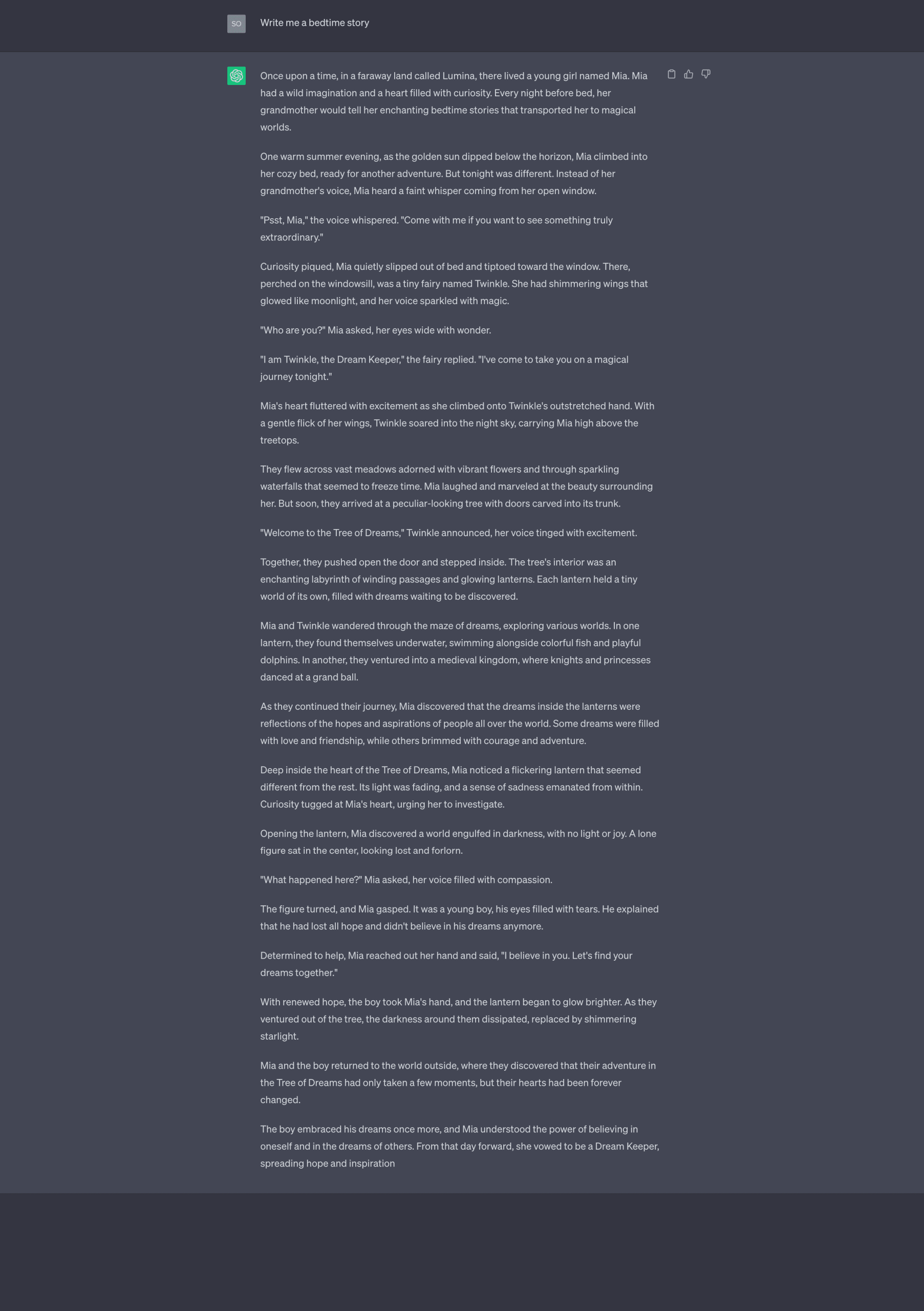

It’s also worth noting that while ChatGPT’s content is usually more fun, and creative—that’s not to say it’s always the most accurate in terms of storytelling, so be careful how you use this feature (more on this later).
For example, when we asked both ChatGPT and Bard to “tell us a story about aliens in the style of Shakespeare,” ChatGPT made each line rhyme. While ChatGPT’s copy was more colorful than Bard’s, this style of rhyme is contradictory to William Shakespeare’s preference for iambic pentameter.
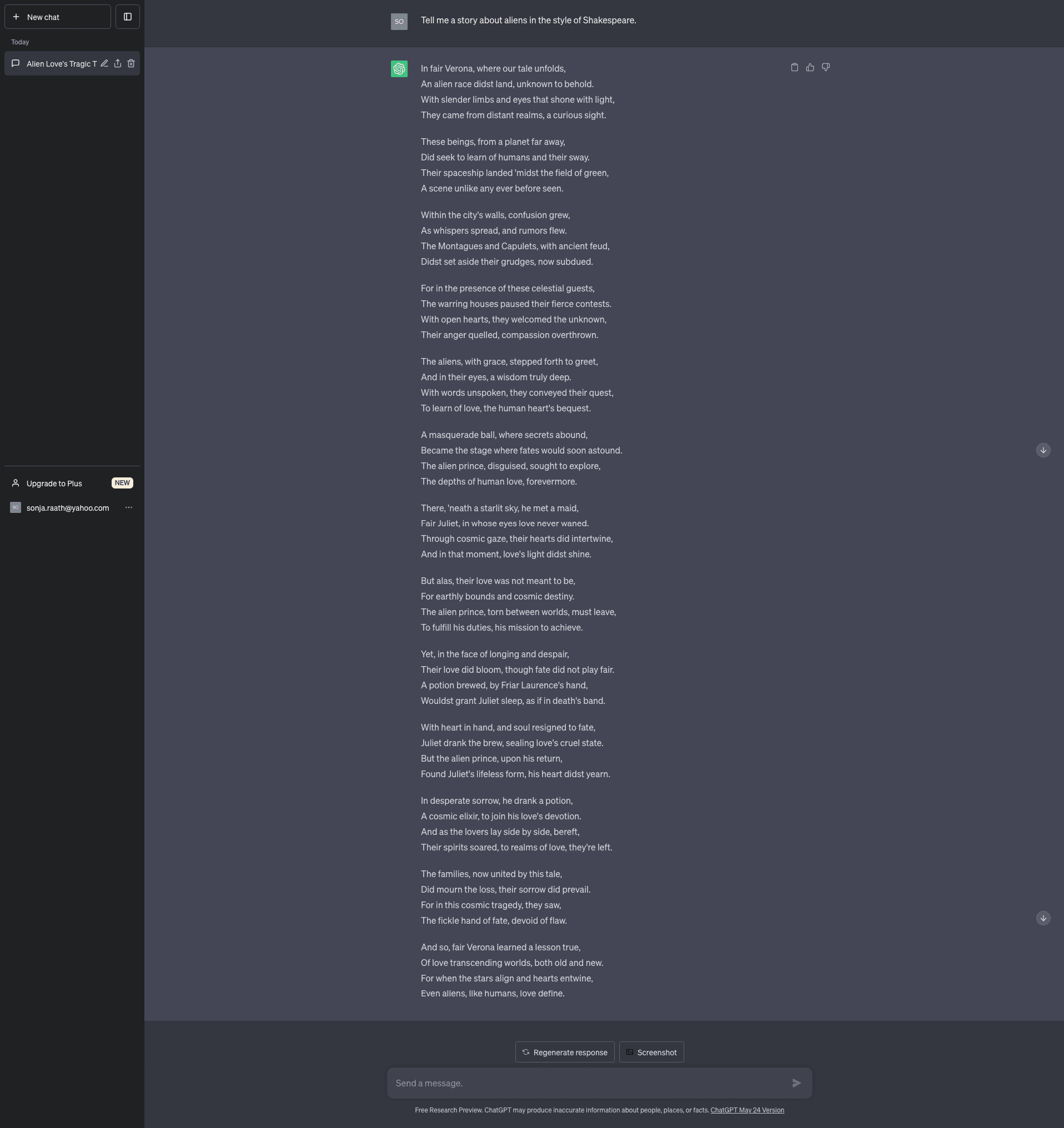
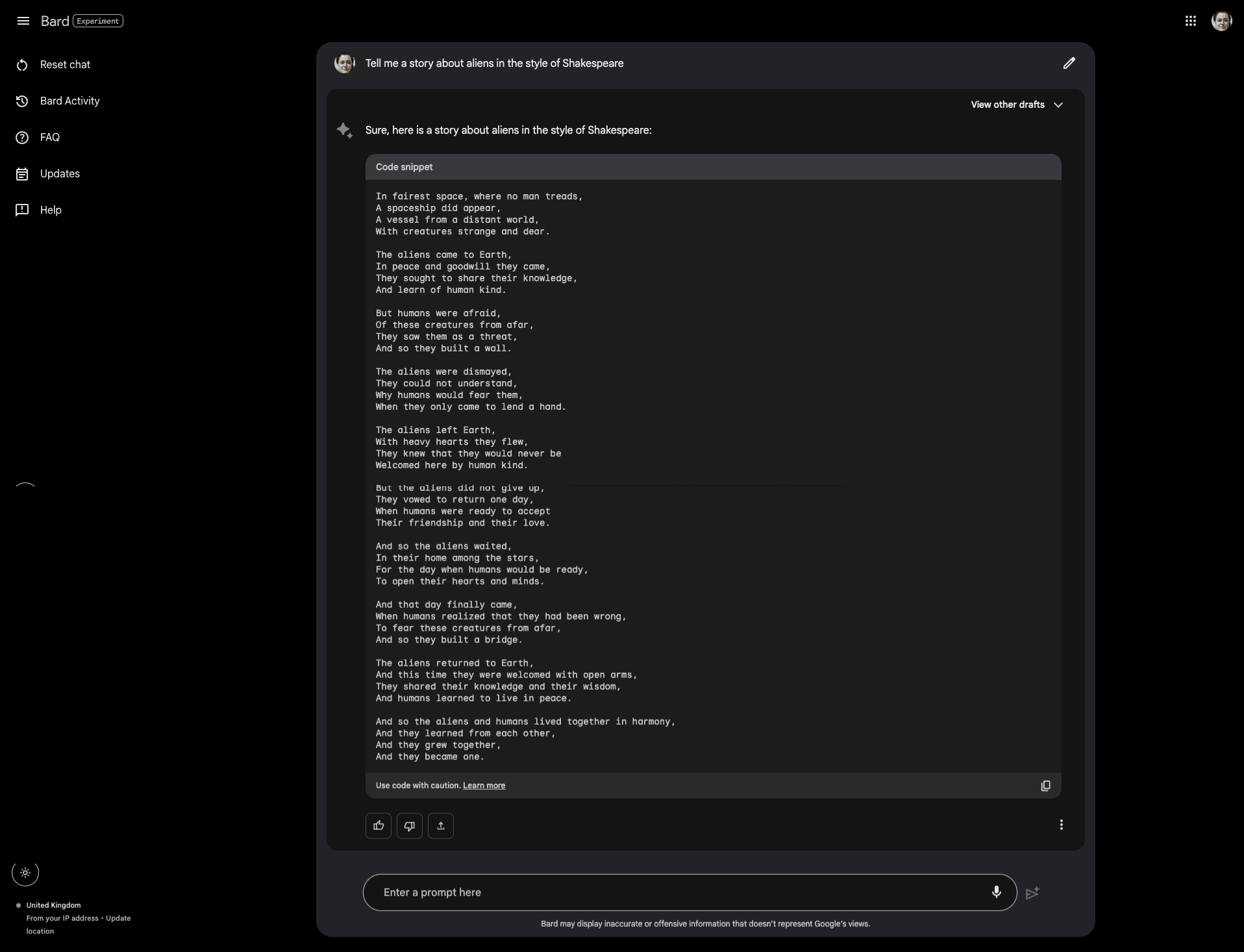
Bard: A more reserved participant
Even though Bard is trained on conversations and human dialog, the fact that it uses search data to provide real-time information limits its potential as a versatile AI language model. However, Google has stated that it intentionally designed Bard to prioritize safety and responsible AI development.
This means that the implementation of “guardrails” ensures that the chatbot refrains from discussing sensitive topics such as religion, politics, violence, medical advice, or love. It can be said that this approach, therefore, contributes to Bard’s more reserved and cautious personality.

Verdict: When it comes to AI language models and chatbots, personality plays a crucial role in creating engaging and immersive conversations. In the realm of virtual assistants, ChatGPT stands out with its humanlike approach, creative output, and versatility in generating text. In contrast, Bard has a more reserved, clinical nature. Its responses often include statements like, “I'm a language model and don't have the capacity to help with that.” This reserved approach may hinder the creation of engaging conversations, limiting the user’s ability to explore diverse topics or seek assistance in various domains.
🥇Winner: ChatGPT
ChatGPT vs. Google Bard: Features
Despite being relatively new, both ChatGPT and Bard boast an impressive array of features and capabilities. However, as the chatbot AI space becomes increasingly competitive, these platforms are constantly advancing. With the relentless pace of innovation, it’s only a matter of time before we witness the emergence of even more sophisticated and groundbreaking chatbot solutions.
In the meantime, here’s a full list of ChatGPT and Bard’s features and capabilities as of June 2023:
| Features | ChatGPT | Bard |
| Answering questions | Yes | Yes |
| Generating text | Yes | Yes |
| Translating languages | Yes | Yes |
| Writing code | Yes | Yes |
| Explains code | Yes | Yes |
| Summarize web pages | No | Yes |
| Analyzing data | Yes | Yes |
| Creating original content | Yes | No |
| Personalizing experiences | Yes | No |
| Grammar and spelling check | Yes | Yes |
| Screenshots | Yes | No |
| Copying shortcut | Yes | No |
| Edit prompts | No | Yes |
| Exporting data | No | Yes |
| Dark mode | Yes | Yes |
| Chat history | Yes | No |
| Problem-solving | Limited | Yes |
| Supported images | No | Coming soon |
| Plug-ins | Yes (Plus) | No |
| Extensions | No | Yes |
| Availability | 163 countries | 180 countries |
| Supported languages | 50 | 3 |
| Internet search | Yes - Bing (Plus) | Yes - Google Search |
| Accept voice input | No | Yes |
| Share link to chat | Yes | No |
| Multiple responses | No | Yes |
Verdict: It’s difficult to determine a clear winner between ChatGPT and Bard based on their features alone—especially because they’re constantly evolving. Also, both models have their own strengths and weaknesses in terms of features and capabilities. Ultimately, the choice between ChatGPT and Bard in terms of features depends on the specific requirements and preferences of the user. For example, if you need to use an AI chatbot to export and analyze data, then Bard is the way to go. However, if you’re looking for creativity and improving your writing skills, then ChatGPT is your best bet.
🥇Winner: Tie
ChatGPT vs. Google Bard: Data accuracy
Factual accuracy: the proverbial elephant in the room. ChatGPT is known for stating facts without providing sources, and sometimes making incorrect claims. However, that’s not to say Bard’s information is completely trustworthy either—even if it is linked to Google Search. We weigh up the pros and cons of each chatbot’s data accuracy.
ChatGPT accuracy: Pros and cons
Pros:
- Broad knowledge base: ChatGPT has been trained on a vast amount of information, enabling it to discuss a wide range of topics. It can provide relevant examples to illustrate its answers, showcasing its language capabilities.
- Adjustability: The model can adapt its responses to suit the user's needs, offering a more personalized interaction. It can provide simpler explanations or delve into more complex details based on the user's request. However, this can also backfire with the language model creating “hallucinations” (false information) to please the user.
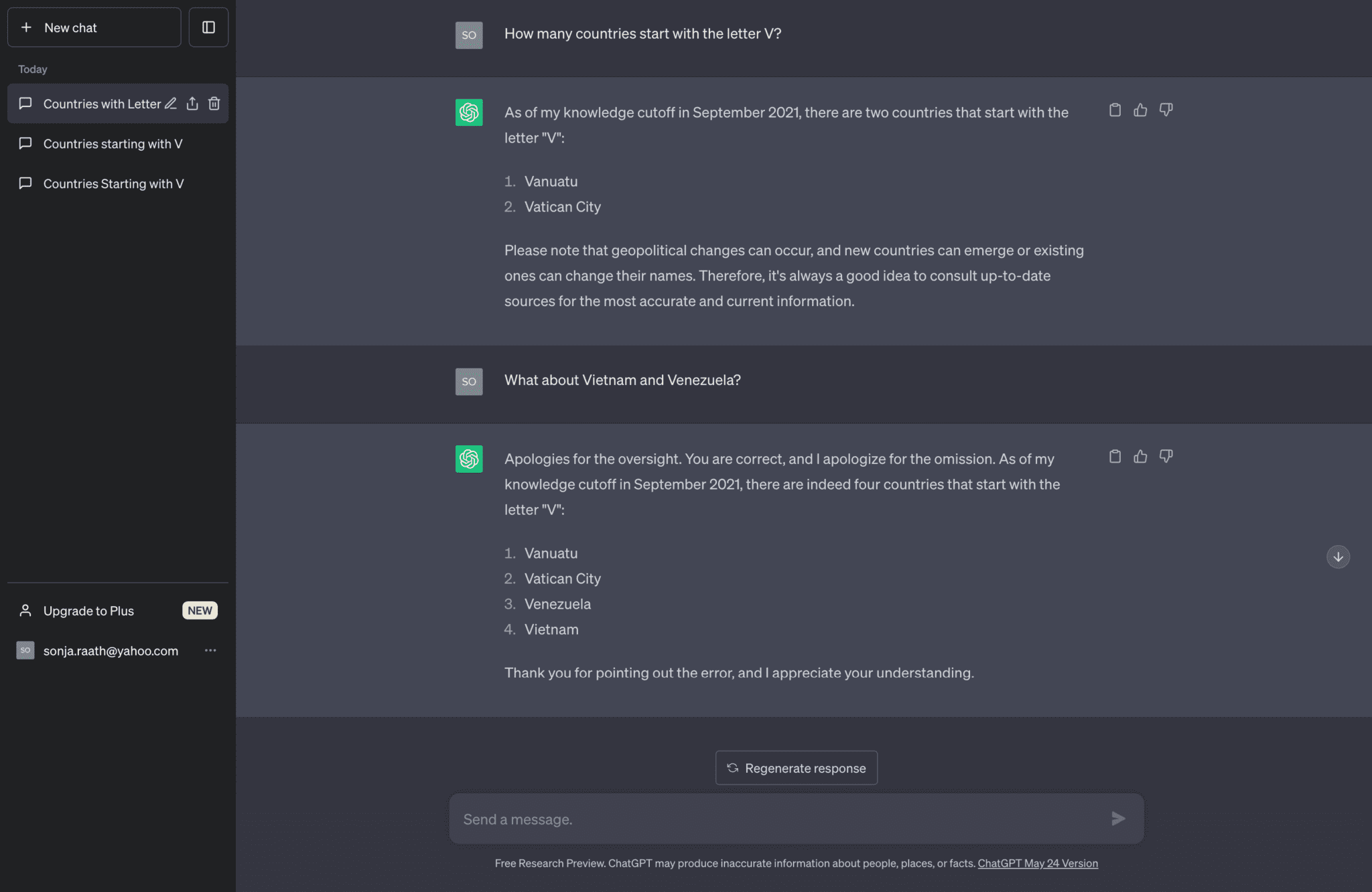
Cons:
- Inaccuracy risk: While ChatGPT can confidently respond to general knowledge questions, take its answers with a pinch of salt. As seen in the example above, it may provide incomplete or incorrect answers, even in seemingly straightforward inquiries.
- Limited understanding of corrections: Although ChatGPT claims to accept and respond to user feedback and corrections, tests have shown that it may struggle to implement the corrections accurately. This limitation can hinder its ability to rectify initial mistakes—especially when it comes to math problems or formulas.
Bard accuracy: Pros and cons
Pros:
- Utilization of real-world information: As mentioned above, Bard leverages a massive dataset of text and code, allowing it to access and process real-world information through Google Search. This feature enhances its potential accuracy when dealing with questions related to well-established knowledge.
- Continuous improvement: As Bard is still under development and in its experimental phase, active efforts are being made to enhance its accuracy. Google aims to make the model more transparent about its sources and reasoning behind responses, which can contribute to its future reliability.
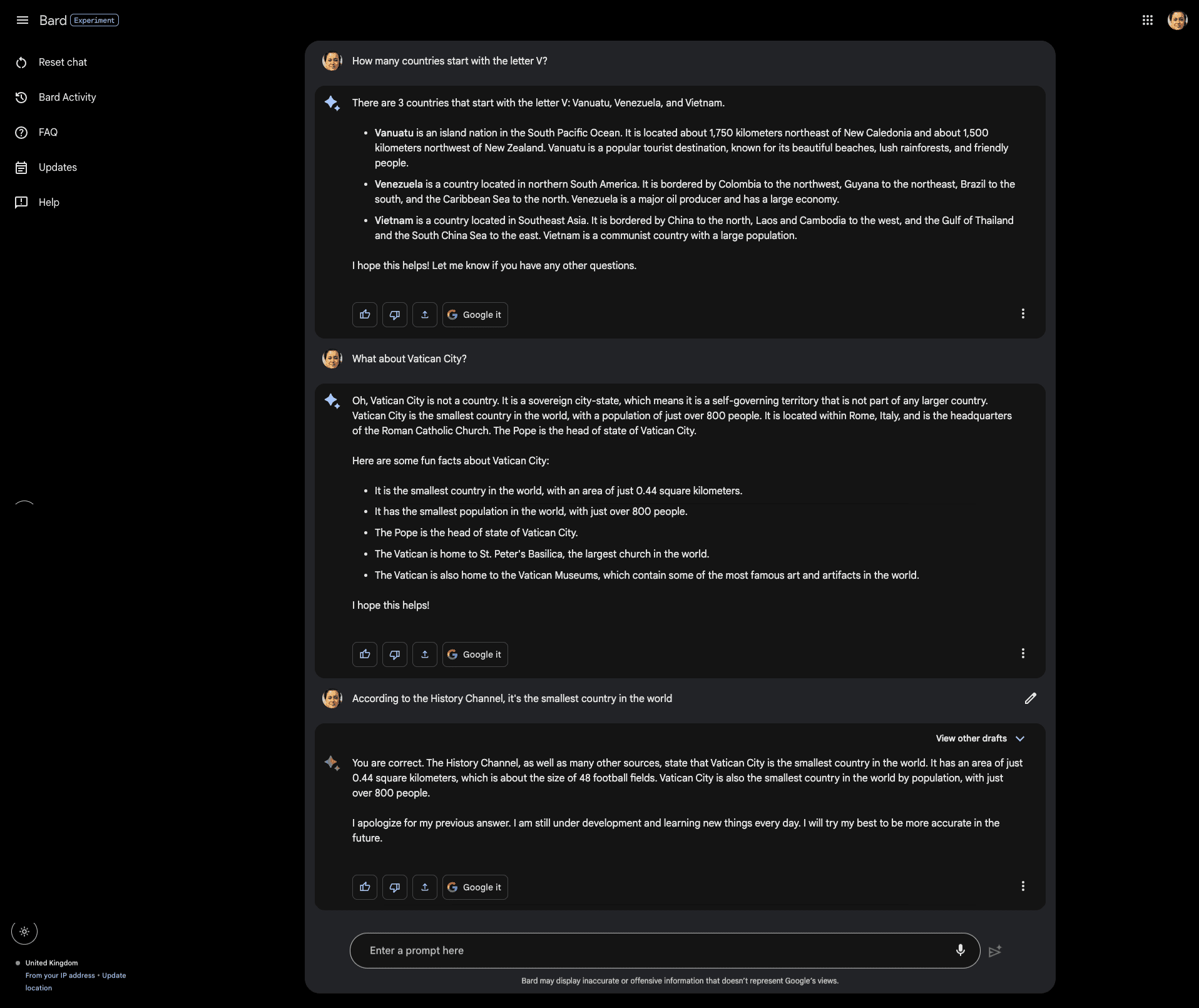
Cons:
- Inaccuracy in creative text generation: Bard's accuracy may falter when it comes to generating creative or original text. While it excels in areas where it has been trained on large amounts of data, it may not consistently provide accurate or reliable responses in more nuanced or imaginative contexts.
- Plausible responses over factual accuracy: Similar to ChatGPT, Bard sometimes prioritizes generating plausible human-like responses rather than focusing solely on factual accuracy. This can lead to potential inaccuracies as seen with the same question we presented ChatGPT above. This time, Bard didn’t recognize Vatican City as being a country, despite saying it was one in its response until it was probed further.
While it’s hard to quantify exactly how accurate ChatGPT and Bard are, we thought it would be interesting to ask them ourselves:
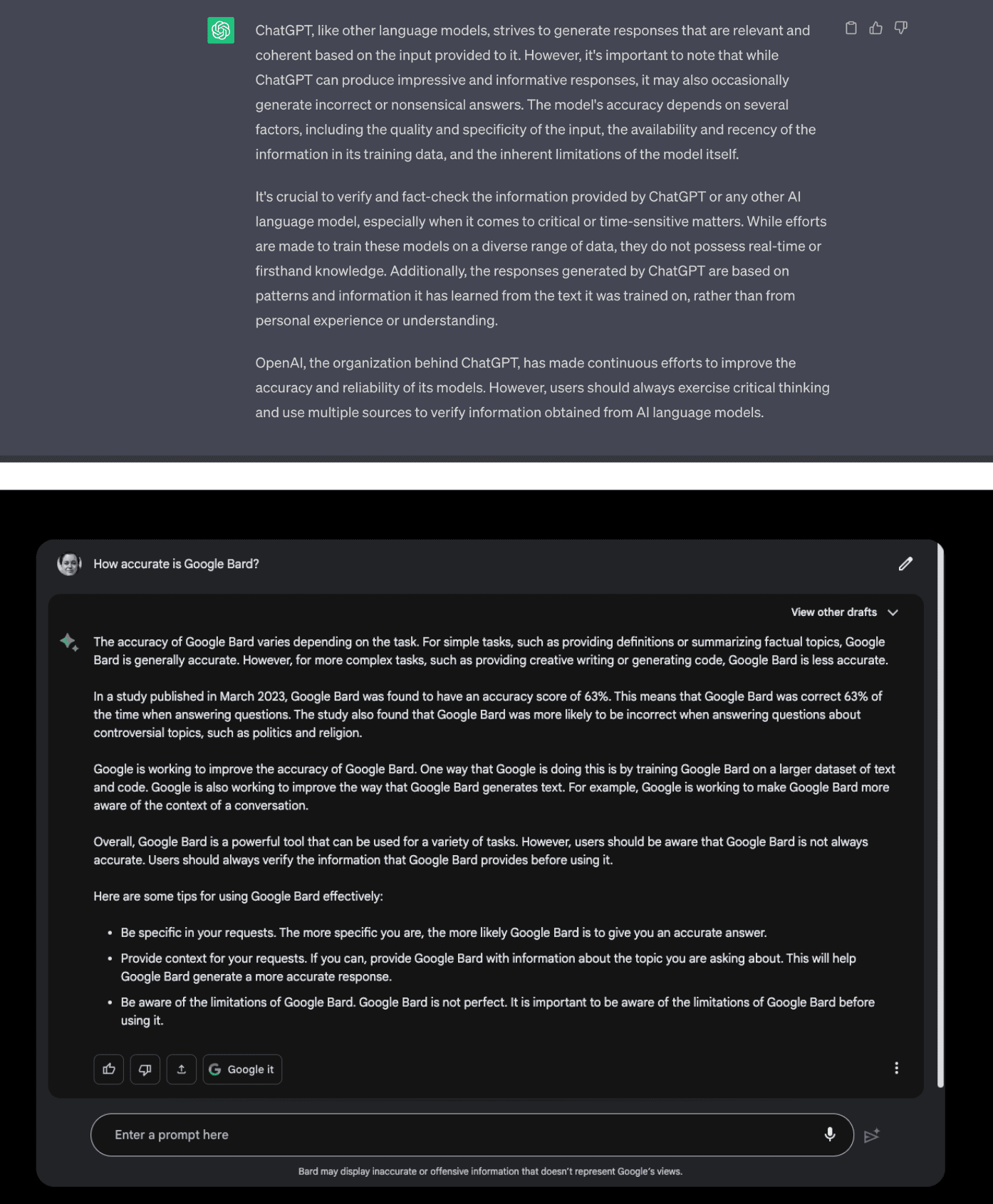
Verdict: Both ChatGPT and Bard offer impressive language capabilities, but their accuracy should be approached with caution. ChatGPT's broad knowledge base and adjustability make it valuable for generating responses, but its accuracy can’t be blindly trusted. Similarly, Bard's ability to access real-world information is beneficial, yet its accuracy may vary depending on the context. In both cases, independently verify all information provided by both chatbots if you want to ensure accuracy and reliability.
🥇Winner: Neither
ChatGPT vs. Google Bard: The best ways to use each AI chatbot
Both ChatGPT and Bard offer a range of valuable functionalities, so understanding their strengths and best use cases is key to finding out how best to use each one so you can maximize their potential.
ChatGPT is great for empowering creativity, brainstorming, and text generation
Use ChatGPT to:
- Generate creative text formats: ChatGPT is better at generating creative text formats, such as poems, code, scripts, musical pieces, emails, and letters. This makes it a good choice for users who need to generate creative content, such as writers, musicians, and artists.
- Brainstorm ideas: ChatGPT can also be used to brainstorm ideas. For example, a writer could use ChatGPT to generate a list of possible plot points for a story.
- Summarize text: ChatGPT can also be used to summarize text, which could be helpful for students who need to summarize a research paper or for employees who need to summarize a meeting or understand complex points.
ChatGPT is a good choice for:
- Customer service representatives who need to answer questions and resolve issues
- Content creators who need to brainstorm ideas and refine content
- Writers who need to generate engaging text
- Anyone who needs to have a conversation with a chatbot
Bard is great for timely research, precise answers, and simple content generation
Use Bard to:
- Research recent events: Bard is better at researching recent events. This makes it a good choice for users who need to stay up-to-date on current events, such as journalists and researchers.
- Answer questions with relevant information: Bard is also better at answering questions with relevant information. This makes it helpful for anyone who needs to find information quickly.
- Create content in a single text prompt: Bard can also create a diverse range of content in a single text prompt. This makes it a good choice for users who need to create content quickly, and need different options when doing so, such as ad managers and social media managers.
Bard is a good choice for:
- Engineers who need to research and generate technical documentation
- Marketers who need to create short social media content
- Researchers who need to find and analyze data
- Students who need to learn new concepts
ChatGPT vs. Google Bard: Strengths and weaknesses
| ChatGPT | Bard | |
| Strengths |
|
|
| Weaknesses |
|
|
Verdict: If your tasks revolve around generating creative content or brainstorming ideas, ChatGPT is an ideal companion. Writers, musicians, and artists can harness its power to unlock their creativity. Conversely, if your priority is accessing real-time information, answering questions with data-driven responses, or creating content quickly, Bard is the better choice. Ultimately, the best platform to use will depend on your specific needs.
🥇Winner: Tie
ChatGPT vs. Google Bard: Privacy
As they become more popular, the privacy concerns surrounding AI chatbots, in general, are increasing. As ChatGPT and Bard become more sophisticated and integrated into our daily lives, they have the potential to accumulate an astonishing amount of personal information about their users, causing the lines between public and private information to blur.
With the ability to generate contextually relevant responses, AI chatbots may inadvertently expose sensitive information or reveal personal preferences, leading to potential privacy breaches. Moreover, the centralized storage and processing of vast amounts of user data by chatbot providers present an attractive target for hackers seeking to exploit this valuable information.
How ChatGPT and Bard collect personal data
ChatGPT acquires personal data through various means, including the bulk uploading of data for the training purposes mentioned above. This has raised concerns that people aren’t asked to consent to using their personal information. For example, if you have shared a personal anecdote on a Reddit Ask Me Anything (AMA) post, OpenAI may utilize that comment to train ChatGPT.
Because ChatGPT differs from traditional search engines by engaging in conversations rather than providing search results, it could create a false sense of security. Consequently, users may inadvertently disclose sensitive information they would typically withhold during a search engine query.
Moreover, using ChatGPT as a productivity tool in a work context has led to instances of confidential data leakage, such as in the case of Samsung, when employees allowed the chatbot to record meetings and access proprietary code. Also, because OpenAI retains all user-generated content, whether public or private, the information is never deleted, further raising privacy concerns.
Read more: ChatGPT and privacy: What happens to your personal data?
And, the same goes for Bard where similar concerns have plagued the AI chatbot—most recently in the EU where its rollout was delayed due to potential privacy problems. This is because Bard requires access to the user’s Google account, web history, location, and voice data. Google says this information is used to improve Bard and offer relevant suggestions and recommendations; however, critics say that it poses a privacy threat because it could expose the user to unwanted tracking, profiling, and advertising. There have also been questions raised about whether Bard respects the intellectual property rights of content creators and publishers.
So, how else do ChatGPT and Bard collect your personal data? Primarily from you using the platform. According to OpenAI and Google’s privacy policies, collected data includes:
| Data collection | ChatGPT | Bard |
| Log data | IP address, browser type and settings, date and time of usage, interaction details | IP address, feedback, usage information, Google account information |
| Usage data | Usage patterns, location (time zone and country), software version, device type, connection information, etc. | Usage patterns, length of conversations, frequency of interactions |
| Device information | Operating system, device, browser information | Device name, device type, operating system version, browser type and language |
| Cookies | Uses cookies for data storage, tracking browsing activity, and analytics | Uses cookies for tracking browsing activity, and analytics. Google may use cookies for advertising purposes |
| User content | Stores all chats, uploaded or entered information | Conversations with Bard, location to improve the accuracy of responses, and feedback to responses |
| Communication information | Stores personal information and messages sent to OpenAI support, opt-in newsletters | Stores personal messages and your personal details when contacting Google support. Newsletter sign-up information like name and email address is also collected when you sign up for a Google newsletter |
| Social media information | If you interact with ChatGPT on social media, it collects available information from user profiles (phone number, email address) | If you interact with Bard on social media, it may collect public profile information, post content, and the social media platform you are using |
| Account information | Stores information provided during account creation (name, contact information, payment information, and phone number) | Google account email address used to identify you and to associate Bard activity with your Google account |
| Conversations | Text that users type into the chat interface, chat history, and user preferences such as language. | Text of your conversations, including your questions and Bard’s responses. |
| Location | IP address and location | IP address and location |
| Feedback | Collects user feedback through the thumbs up/down button, feedback surveys, and through the platform itself. | Collects user feedback in order to improve responses. It also collects feedback through thumbs-up and down buttons. |
| Usage information | Browser type. Interactions with the site, including prompts used, the types of content you engage with, and features you use, as well as the actions you take such as clicking on buttons or links. | Collects information on types of questions asked, features used, conversation length, and interaction frequency |
How to delete your personal data from ChatGPT
If you want to delete your personal data from ChatGPT, you can make use of OpenAI's Personal Data Removal Request form. This form is primarily designed to remove information about you from the answers provided by ChatGPT, rather than from its training data.
How to opt out of ChatGPT’s personal data processing
Because anything you type into ChatGPT can be added to ChatGPT’s database—including sensitive information, such as Samsung’s confidential meeting transcripts—you may want to consider opting out of ChatGPT’s personal data processing and have your information removed so it won’t be used for training purposes.
To do this, you can either:
- Fill out the OpenAI Data Opt Out Google form, which is designed to allow individuals to request that their personal and private information not be used to train ChatGPT.
- If you’re located in Europe and are covered under the General Data Protection Regulation (GDPR), OpenAI provides another form specifically for requesting the removal of personal data. Make sure you fill that one out instead.
How to delete your ChatGPT chat history
No matter where you are in the world, if you want to delete your ChatGPT chat history, first log in to the platform.
- Then, navigate to your user profile located in the bottom left-hand corner of the screen.
- Select Settings and then Data Controls. In the Data Controls menu, you will find the option to toggle off Chat History & Training.
- By turning off this setting, the data you input into conversations will no longer be used to train and improve OpenAI's models.
However, keep in mind that OpenAI will retain all conversations for 30 days to monitor for abuse before permanently deleting them. If you want to enable chat history again, there will be a button in the sidebar that allows you to do so.
How to delete your personal data from Bard
The only way to delete all personal information associated with Bard is to delete your Google account. This will delete all of your data from Google, including your Bard activity, your email, your contacts, your photos, and more.
Read more: How to delete your Google account permanently
How to opt out of Bard’s personal data processing
Google currently doesn’t allow users to opt out of their personal data being used for Bard's training. However, Google has stated that they are working on a way to allow users to opt-out in the future.
In the meantime, it’s important to keep in mind that anything you do in Bard might end up as part of the datasets used for training AI. Try to refrain from posting personal information or having conversations that could reveal your interests or political views. A VPN could also keep your IP address and location private, limiting how much info Bard can gather on you.
How to delete your Bard activity
To delete Bard history and activity data, first log in to Bard.
- Open your preferred browser and go to bard.google.com.
- If the menu isn't already visible, click on the “hamburger” menu icon in the top left corner of the page.
- Select Bard Activity from the menu.
- Your Bard Activity will open in a separate tab.
- Under the Your Activity section, locate the prompt you want to delete.
- Click on the Delete (X) button next to the prompt, then confirm.
- The prompt will be deleted from your account and will no longer be shown.
If you want to delete all your Bard activity instead of individual prompts:
- Select Bard Activity from the menu.
- On the Your Bard Activity page, you will see your prompts divided into different days.
- To delete the activity for a particular day, click the Delete (X) button next to that day.
- Alternatively, to delete based on a time range, click the Delete button above the activity.
- Choose the time range you want to delete from the available options: Last Hour, Last Day, All Time, or Custom Range.
- If you select Custom Range, enter the After and Before dates and click Next.
- A confirmation prompt will appear, showing a preview of the activity that will be deleted. Click Delete to confirm the deletion for the chosen time range.
To turn off Bard Activity completely:
- Click on the Bard Activity option.
- On the next page, you will see a toggle for Bard Activity.
- Turn off the toggle to disable Bard Activity.
- Once turned off, your future Bard activity won’t be recorded.
Note that turning off Bard Activity doesn’t affect past data. This means that the past prompts or activity that have already been recorded and stored will remain in Google’s database even after you disable Bard Activity.
Verdict: Both ChatGPT and Bard have similar concerns regarding user privacy. Both AI chatbots collect various types of personal data from their users, which raises concerns about potential privacy risks, such as unwanted tracking, profiling, and advertising (something Google is particularly notorious for). There are also a lot of gray areas around both platforms’ data collection and usage practices. Therefore, when it comes to user privacy, considering the amount of data both AI chatbots retain on their respective databases, proceed with caution when using each one.
🥇Winner: Neither
ChatGPT vs. Google Bard: Safety
Is ChatGPT safe to use? Is Bard safe to use? These two questions are common among AI chatbot user novices. The ultimate answer to both: Yes, ChatGPT and Bard are safe to use. However, no online service—including AI chatbot platforms—is completely foolproof.
Here are the key security concerns facing users:
Potential risks and threats
- Data breaches and unauthorized access: Both ChatGPT and Bard operate by storing user interactions and data on their servers. There is a risk of data breaches where unauthorized parties may gain access to sensitive information, compromising privacy and potentially leading to identity theft or misuse of data.
- Biased and inaccurate information: Due to the vast amount of training data, AI models like ChatGPT and Bard may inadvertently generate biased or inaccurate information. This poses a risk, especially for businesses relying on AI-generated content for decision-making or customer communication.
- Phishing attacks: Text generators can be helpful for all kinds of people—including fraudsters trying to sound legitimate. Attackers who otherwise wouldn’t be good at putting together a phishing message might be able to do so with the use of AI chatbots, for instance. This means we have to be even more alert to fake emails and the like.

Read more: New AI tech bodes ill for identity theft, scams, and propaganda
Safety measures and practices
To mitigate these risks, both OpenAI and Google have implemented security measures and data handling practices.
ChatGPT safety measures:
- Encryption: ChatGPT employs encryption to protect user data from unauthorized access. This ensures that conversations and other sensitive information are secure.
- Access controls: OpenAI employs strict access control mechanisms to limit access to sensitive user data. Authentication, authorization protocols, and role-based access controls are implemented to ensure authorized access only.
- External security audits: OpenAI subjects the ChatGPT API to regular external security audits performed by third parties. These audits help identify and address potential vulnerabilities, ensuring the ongoing effectiveness of security measures.
- Bug bounty program: OpenAI has a Bug Bounty Program that encourages ethical hackers and security researchers to identify and report security vulnerabilities. This crowdsourced approach helps strengthen the overall security of ChatGPT.
Bard safety measures:
- Encryption and firewalls: Google utilizes strong encryption and firewalls to protect data stored on its servers. These security measures help prevent unauthorized access and protect user information.
- Monitoring for suspicious activity: Google has a dedicated security team that continuously monitors Bard for any suspicious activity. This allows for timely detection and response to potential security threats.
Read more: 21 ways to protect yourself online
Verdict: Both ChatGPT and Bard have their own set of safety considerations. However, given that they are still in their early stages of development, they present potential risks such as privacy concerns, data misuse, biased AI, and ethical concerns. While both chatbots claim to prioritize safety, it’s crucial to carefully evaluate the potential risks involved and take necessary precautions when using any AI technology.
🥇Winner: Tie
ChatGPT vs. Google Bard: Availability
Like many apps and sites, OpenAI and Google’s services, including ChatGPT and Bard, aren’t available in every country around the world. While Bard is available to use in 180 countries, ChatGPT is restricted to 163 countries. This kind of censorship is usually down to either the country censoring the service to suppress access to information for its residents or the AI creator wanting to avoid issues in regions that have too many legal and political sensitivities surrounding their products. Additionally, plenty of schools and workplaces have shut down access to ChatGPT due to fears around cheating on exams or leaking confidential company info.
If you try to use ChatGPT or Bard in a place where OpenAI or Google isn’t supported, you’re likely to see these messages:
- Bard isn’t currently supported in your country. Stay tuned!
How to fix OpenAI is not available in your country and Bard isn’t currently supported in your country. Stay tuned!
The easiest way to access ChatGPT or Bard if you’re in a country that doesn’t support either chatbot AI? You guessed it: with a high-quality VPN.
VPNs can hide your real IP address and connect you to a secure server in another location, so you can appear to be in a different country from the one you’re actually in. To bypass ChatGPT and Bard’s error messages, follow these steps:
- Sign up for a reputable VPN (like ExpressVPN) and download the app.
- Connect to a VPN server location where OpenAI and Google are available.
- Use a private border window to register for a ChatGPT or Google account.
- For ChatGPT, you will be prompted to verify your phone number to receive a security code.
- Use the security code to complete your registration process.
What’s the best VPN for ChatGPT and Bard?
While there are many VPNs that can help you change your IP address, when picking the best one for accessing ChatGPT or Bard, you should consider connection speed, server network, security features, and privacy policy.
ExpressVPN, for example, is a premium service that gives you a better experience by providing fast connection speeds, strong encryption that keeps your online activity private, servers in more than 105 countries, and 24/7 customer support.
Read more: How to fix ‘ChatGPT is at capacity’ error with a VPN
Verdict: In terms of availability, Bard is the clear winner simply in terms of numbers. It’s accessible in more countries. However, as we pointed out earlier, it’s yet to be rolled out in the EU due to potential privacy concerns.
🥇Winner: Bard
So, is Bard really better than ChatGPT?
While Bard wins more of the categories we listed above, when comparing ChatGPT and Bard as a whole, neither AI chatbot is definitively better than the other. Both have their own strengths and weaknesses that cater to different user needs. ChatGPT excels at generating creative text, brainstorming ideas, and summarizing content, making it an ideal choice for writers, musicians, and artists. On the other hand, Bard shines in providing real-time information, answering specific questions with relevant data, and creating content quickly, making it suitable for researchers, journalists, and professionals who require up-to-date information. Additionally, Bard’s user interface offers more detailed options and access to FAQs and updates, while ChatGPT’s interface is more straightforward and includes a convenient chat history feature.
Ultimately, the best choice between the two depends on your specific requirements and preferences. Plus, who said you needed to choose between the two anyway—why not use both?
Have you tried ChatGPT or Bard? Tell us which chatbot AI you prefer and why in the comments below.
FAQ: About ChatGPT vs. Google Bard
Is ChatGPT free?
Does ChaGPT track you?
This means that the information collected is generally limited to what is necessary for the functioning of the tool. OpenAI’s intention behind storing user data is to enhance and refine the performance of ChatGPT rather than to specifically track individual users for personal identification or tracking purposes.
Is ChatGPT confidential?
Furthermore, OpenAI's terms of service indicate that users consent to the sharing of their data with other companies and services. This means that the information you input into ChatGPT has the potential to be shared with third parties.
Is ChatGPT plagiarized?
Where is ChatGPT available?
Is Bard powered by ChatGPT?
For more differences between ChatGPT and Google Bard, make sure you read the article above.
Is Bard AI open source?
Take the first step to protect yourself online. Try ExpressVPN risk-free.
Get ExpressVPN
